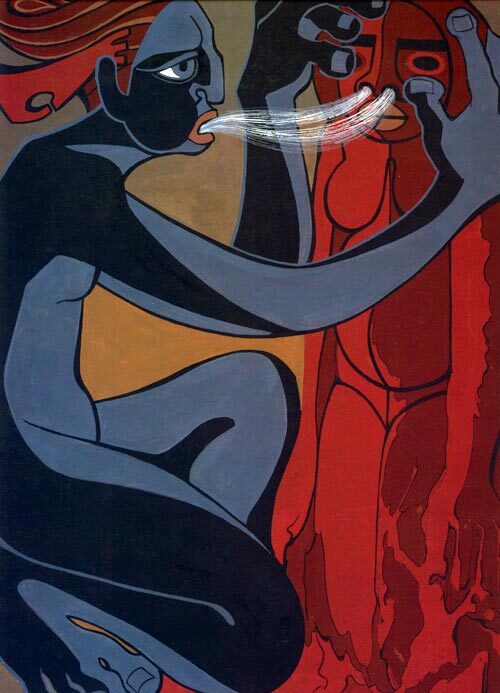Hongi
From Wikipedia, the free encyclopedia
The traditional Māori greeting, the hongi (Māori pronunciation: [ˈhɔŋi]) is performed by two people pressing their noses together; some include, at the same time, the touching of foreheads. The greeting is used at traditional meetings among Māori people,[2] and at major ceremonies, such as a pōwhiri. It may be followed by a handshake.
In the hongi, the ha (breath of life) is exchanged in a symbolic show of unity. Through the exchange of this greeting, manuhiri, visitors, blend with tangata whenua, the people of the land, and establish a connection.
A rāhui (temporary ban) was placed on the use of the hongi by some iwi and rūnanga (tribes and tribal councils) as a result of the COVID-19 pandemic
Symbolism
When Māori greet one another by pressing noses, the tradition of sharing the breath of life is considered to have come directly from the gods. In Māori mythology, woman was created by the gods moulding her shape out of the earth. The god Tāne embraced the figure and breathed into her nostrils. She then sneezed and came to life, creating the first woman in Māori legends, Hineahuone.
Examples
The hongi may be performed by Māori and non-Māori, and between New Zealanders and foreign visitors. Several British royals have been greeted with the hongi during visits to New Zealand, including: Prince Charles; Princess Diana; Duchess Camilla; Prince William and Kate Middleton; and Prince Harry and Meghan Markle. U.S. Secretary of State Hillary Clinton was greeted with a hongi in November 2010 during her visit to Wellington. Former U.S. President Barack Obama exchanged a hongi during a visit to the country in March 2018. The hongi is used in some churches as a way to share the sign of peace.

Two Māori women exchange a hongi, 1913.
*Pōwhiri
A pōwhiri encapsulates the formal welcome ceremony onto the marae, starting with the initial karanga (call) from the tangata whenua (people of the land, the hosts) right up to the sharing of kai. This process also removes the tapu (sacredness) from the manuhiri (visitors), who are referred to as waewae tapu (literally, sacred feet) if they are first-time visitors to that particular marae.
There are two main types of kawa observed during pōwhiri, and within this, several variations.
They are tau utuutu (or tū mai, tū atu) and paeke:
Two kuia (women elders) press noses in the ancient Māori greeting called the hongi in 1963 at Tūrangawaewae marae, Ngāruawāhia. All genders greet each other this way in Māori society, especially in more culturally formal situations such as on a marae.
The hongi (1st of 2)

Two kuia (women elders) press noses in the ancient Māori greeting called the hongi in 1963 at Tūrangawaewae marae, Ngāruawāhia. All genders greet each other this way in Māori society, especially in more culturally formal situations such as on a marae. Non-Māori can also expect to be greeted with a hongi when taking part in Māori ceremonies.
Origin of the hongi (2nd of 2)

The tradition of the hongi recalls the Māori legend of the creation of the first earthly woman, Hineahuone. She was formed from clay by the creator god Tāne, who then breathed life into her nostrils. This 1976 illustration by Ngāpuhi artist Pauline Kahurangi Yearbury shows them at that moment.
'History & Human Geography' 카테고리의 다른 글
| 端宗 子 規 詩 (단종.자 규 시 ) (0) | 2022.02.09 |
|---|---|
| 이화(梨花)에 월백(月白)하고 (0) | 2022.02.09 |
| Queen Elizabeth II's Platinum Jubilee/ On February 6, 2022 (0) | 2022.02.05 |
| 지구 육지 11% 차지한 러시아는 왜 계속 ‘땅’을 탐낼까... 지도에 답이 있다 (0) | 2022.01.15 |
| Karl Heinrich Marx 1 (0) | 2022.01.08 |

